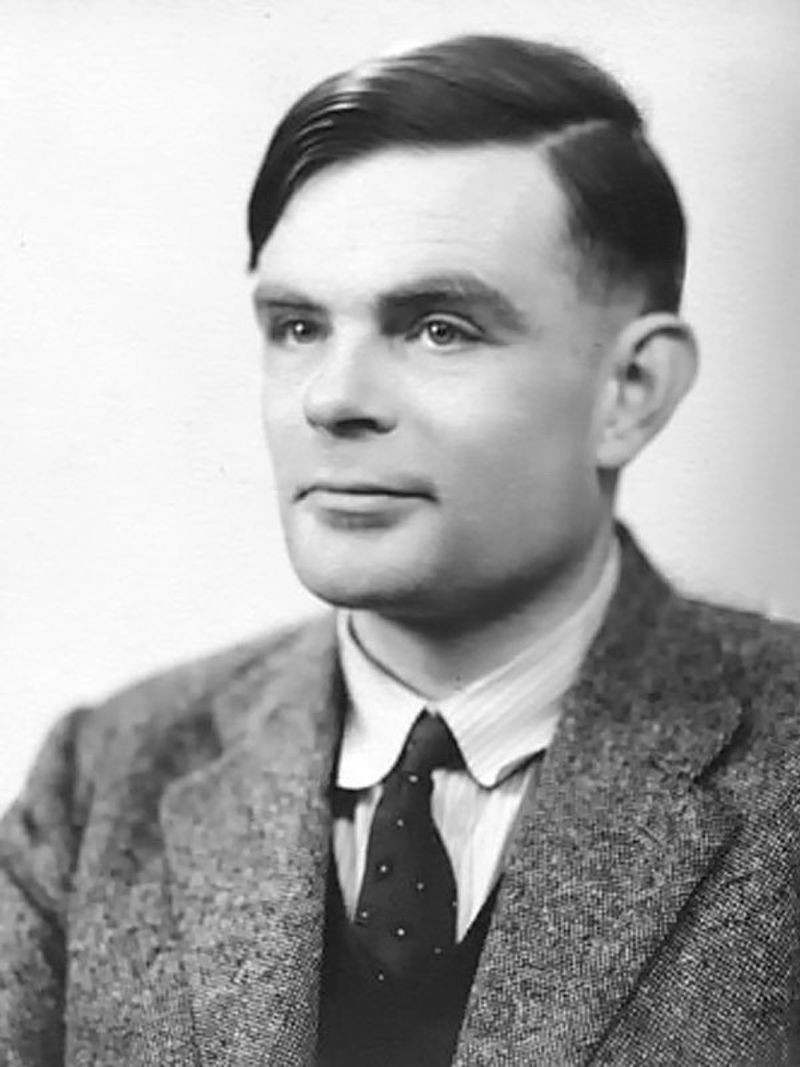
Operator at Complex Number Calculator (CNC)
The Complex Number Calculator (CNC) is completed
In 1939, Bell Telephone Laboratories completes this calculator, designed by scientist George Stibitz. In 1940, Stibitz demonstrated the CNC at an American Mathematical Society conference held at Dartmouth College. Stibitz stunned the group by performing calculations remotely on the CNC (located in New York City) using a Teletype terminal connected to New York over special telephone lines. This is likely the first example of remote access computing.

The Zuse Z3 Computer
Konrad Zuse finishes the Z3 Computer
The Z3, an early computer built by German engineer Konrad Zuse working in complete isolation from developments elsewhere, uses 2,300 relays, performs floating point binary arithmetic, and has a 22-bit word length. The Z3 was used for aerodynamic calculations but was destroyed in a bombing raid on Berlin in late 1943. Zuse later supervised a reconstruction of the Z3 in the 1960s, which is currently on display at the Deutsches Museum in Munich.

May 1941 issue of Astounding Science Fiction
The Three Laws of Robotics
Isaac Asimov publishes the science fiction short story Liar! in the May issue of Astounding Science Fiction. In it, he introduced the Three Laws of Robotics:
- A robot may not injure a human being or, through inaction, allow a human being to come to harm.
- A robot must obey the orders given to it by human beings, except where such orders would conflict with the First Law.
- A robot must protect its own existence as long as such protection does not conflict with the First or Second Laws.
This is thought to be the first known use of the term “robotics.”
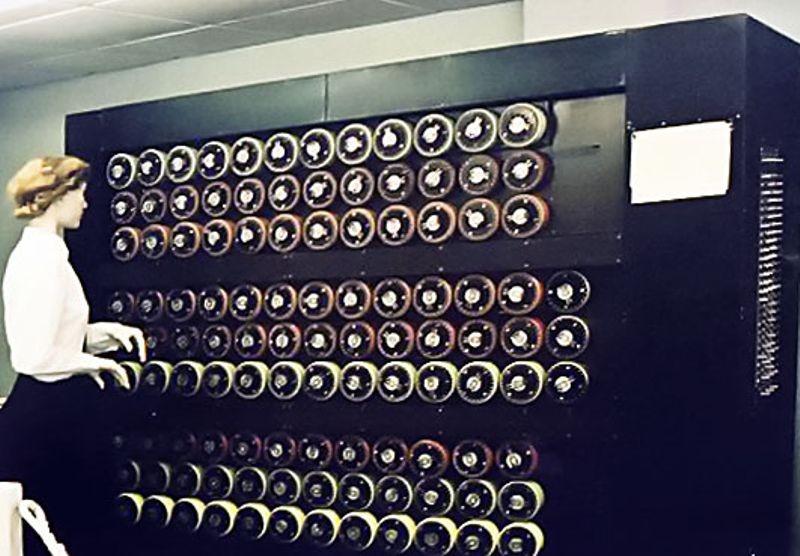
Bombe replica, Bletchley Park, UK
The first Bombe is completed
Built as an electro-mechanical means of decrypting Nazi ENIGMA-based military communications during World War II, the British Bombe is conceived of by computer pioneer Alan Turing and Harold Keen of the British Tabulating Machine Company. Hundreds of allied bombes were built in order to determine the daily rotor start positions of Enigma cipher machines, which in turn allowed the Allies to decrypt German messages. The basic idea for bombes came from Polish code-breaker Marian Rejewski’s 1938 “Bomba.”
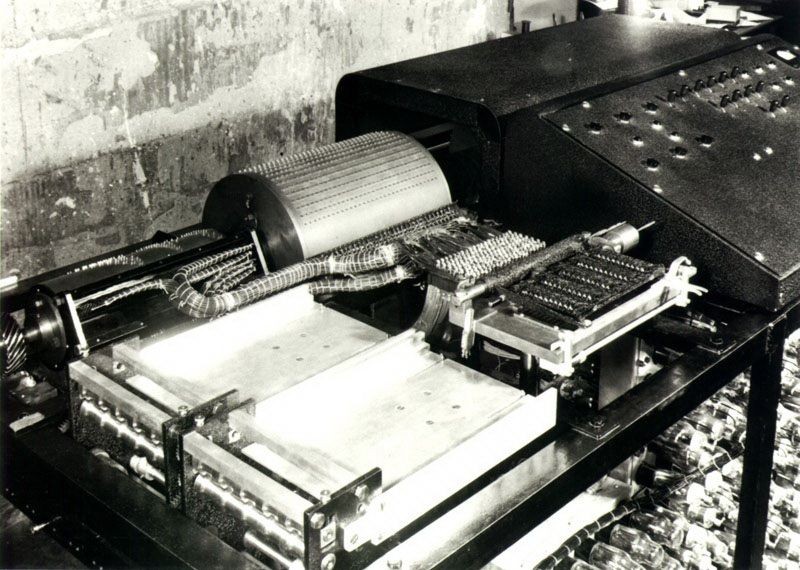
The Atanasoff-Berry Computer
The Atanasoff-Berry Computer (ABC) is completed
After successfully demonstrating a proof-of-concept prototype in 1939, Professor John Vincent Atanasoff receives funds to build a full-scale machine at Iowa State College (now University). The machine was designed and built by Atanasoff and graduate student Clifford Berry between 1939 and 1942. The ABC was at the center of a patent dispute related to the invention of the computer, which was resolved in 1973 when it was shown that ENIAC co-designer John Mauchly had seen the ABC shortly after it became functional.
The legal result was a landmark: Atanasoff was declared the originator of several basic computer ideas, but the computer as a concept was declared un-patentable and thus freely open to all. A full-scale working replica of the ABC was completed in 1997, proving that the ABC machine functioned as Atanasoff had claimed. The replica is currently on display at the Computer History Museum.

Walter Pitts
A Logical Calculus of the Ideas Immanent in Nervous Activity
Two scientists, Warren S. McCulloch and Walter H. Pitts, publish the groundbreaking paper A Logical Calculus of the Ideas Immanent in Nervous Activity. The paper quickly became a foundational work in the study of artificial neural networks and has many applications in artificial intelligence research. In it McCulloch and Pitts described a simplified neural network architecture for intelligence, and while the neurons they described were greatly simplified compared to biological neurons, the model they proposed was enhanced and improved upon by subsequent generations of researchers.
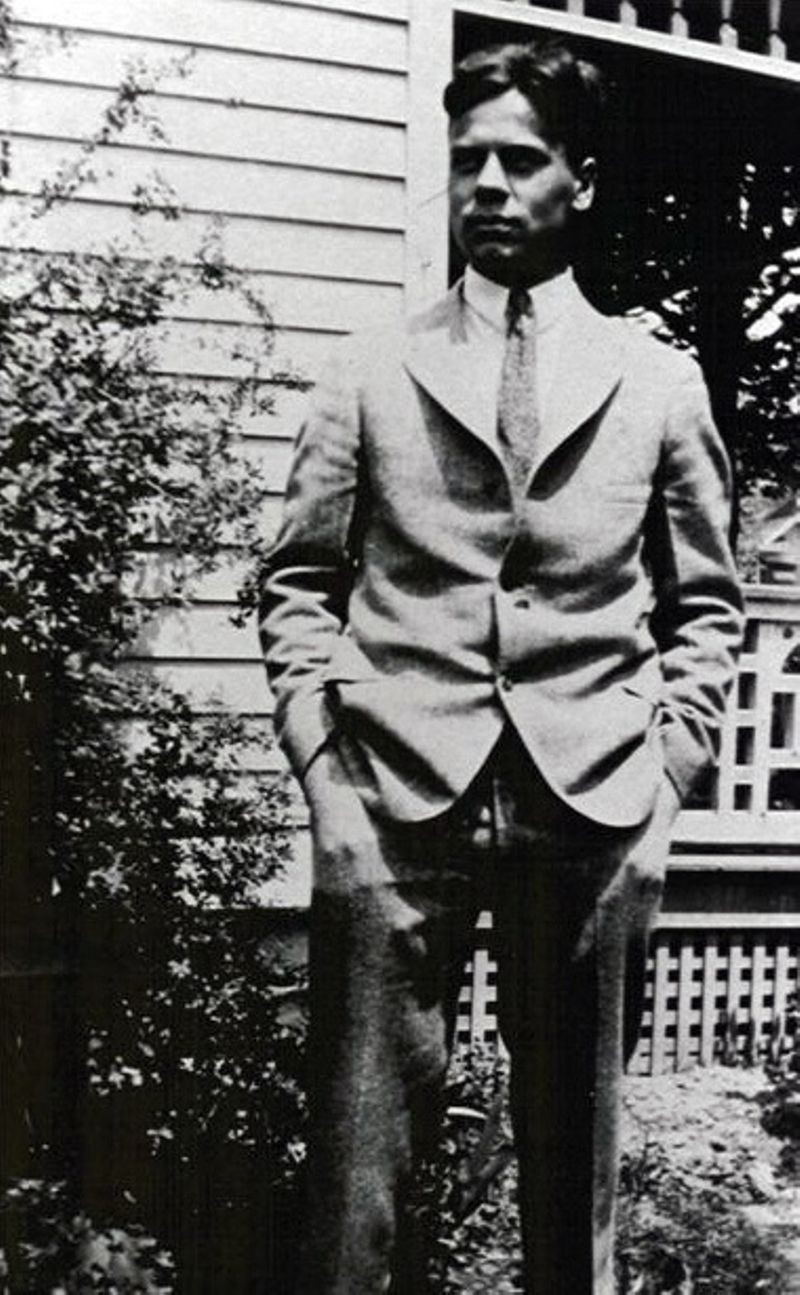
George Stibitz circa 1940
Bell Labs Relay Interpolator is completed
The US Army asked Bell Laboratories to design a machine to assist in testing its M-9 gun director, a type of analog computer that aims large guns to their targets. Mathematician George Stibitz recommends using a relay-based calculator for the project. The result was the Relay Interpolator, later called the Bell Labs Model II. The Relay Interpolator used 440 relays, and since it was programmable by paper tape, was used for other applications following the war.
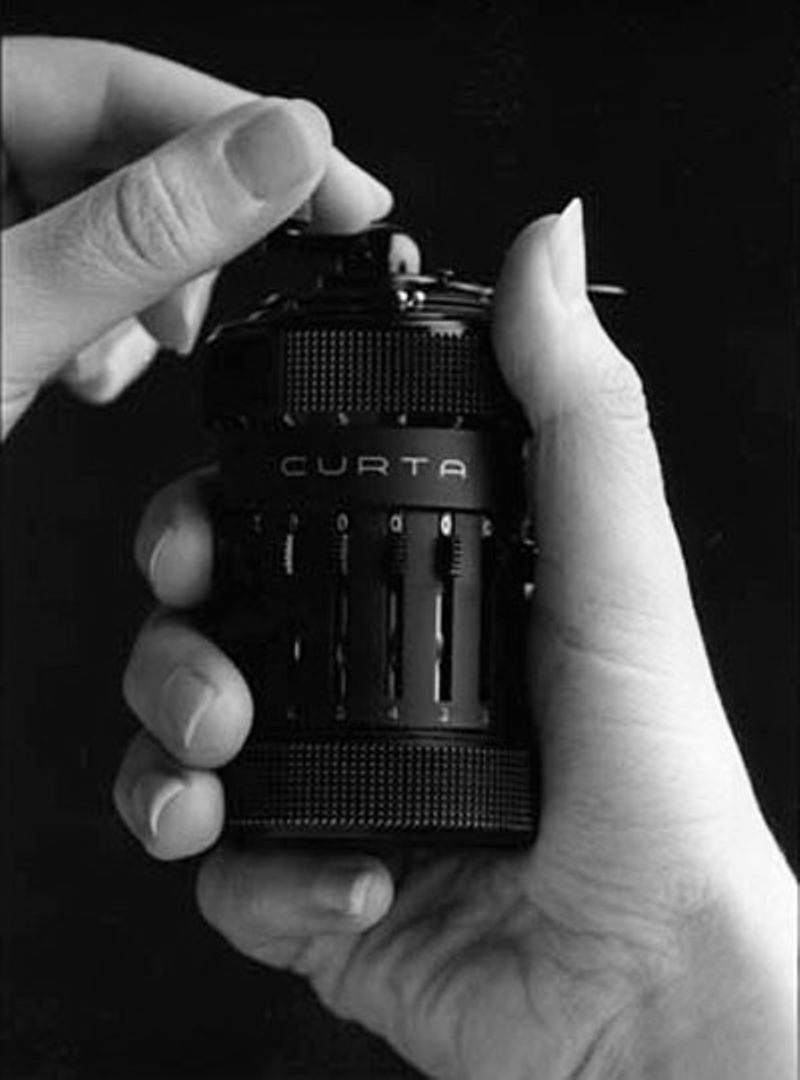
Curta Model 1 calculator
Curt Herzstark designs Curta calculator
Curt Herzstark was an Austrian engineer who worked in his family’s manufacturing business until he was arrested by the Nazis in 1943. While imprisoned at Buchenwald concentration camp for the rest of World War II, he refines his pre-war design of a calculator featuring a modified version of Leibniz’s “stepped drum” design. After the war, Herzstark’s Curta made history as the smallest all-mechanical, four-function calculator ever built.
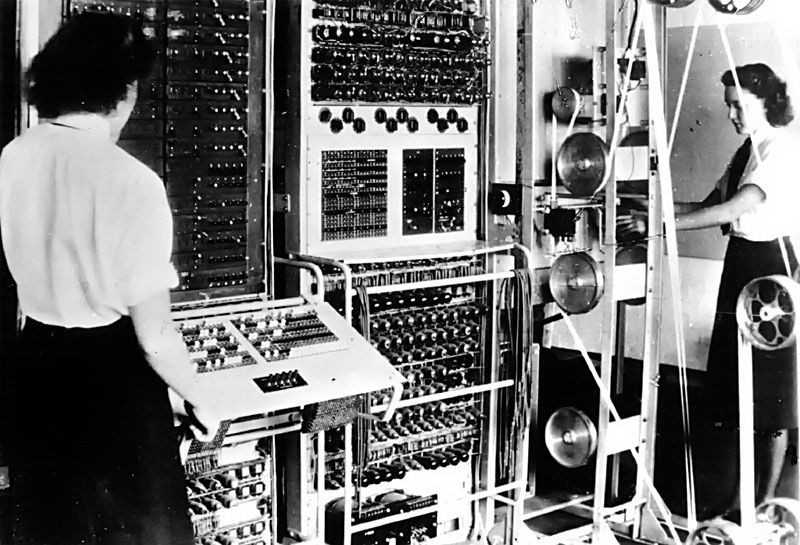
The Colossus at work at Bletchley Park
First Colossus operational at Bletchley Park
Designed by British engineer Tommy Flowers, the Colossus is designed to break the complex Lorenz ciphers used by the Nazis during World War II. A total of ten Colossi were delivered, each using as many as 2,500 vacuum tubes. A series of pulleys transported continuous rolls of punched paper tape containing possible solutions to a particular code. Colossus reduced the time to break Lorenz messages from weeks to hours. Most historians believe that the use of Colossus machines significantly shortened the war by providing evidence of enemy intentions and beliefs. The machine’s existence was not made public until the 1970s.
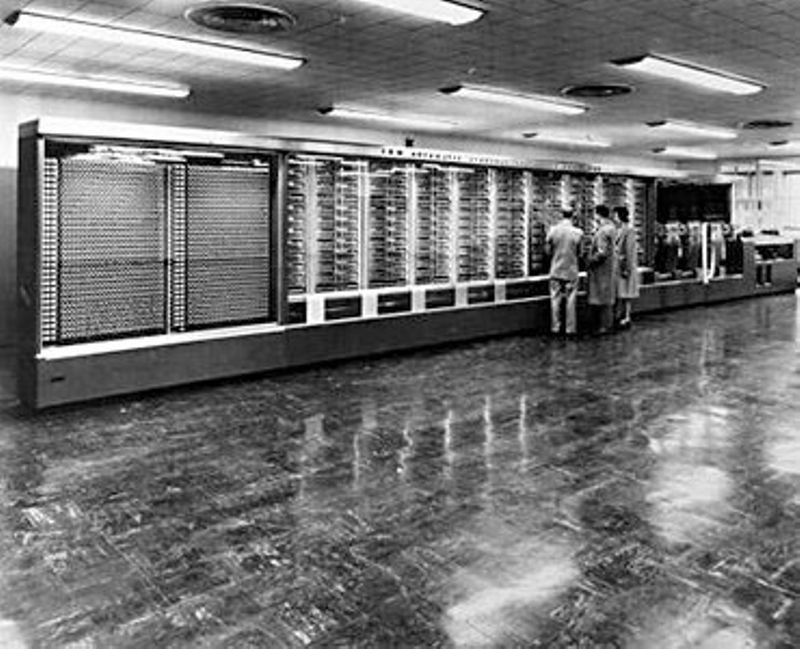
Harvard Mark 1 is completed
Harvard Mark 1 is completed
Conceived by Harvard physics professor Howard Aiken, and designed and built by IBM, the Harvard Mark 1 is a room-sized, relay-based calculator. The machine had a fifty-foot long camshaft running the length of machine that synchronized the machine’s thousands of component parts and used 3,500 relays. The Mark 1 produced mathematical tables but was soon superseded by electronic stored-program computers.
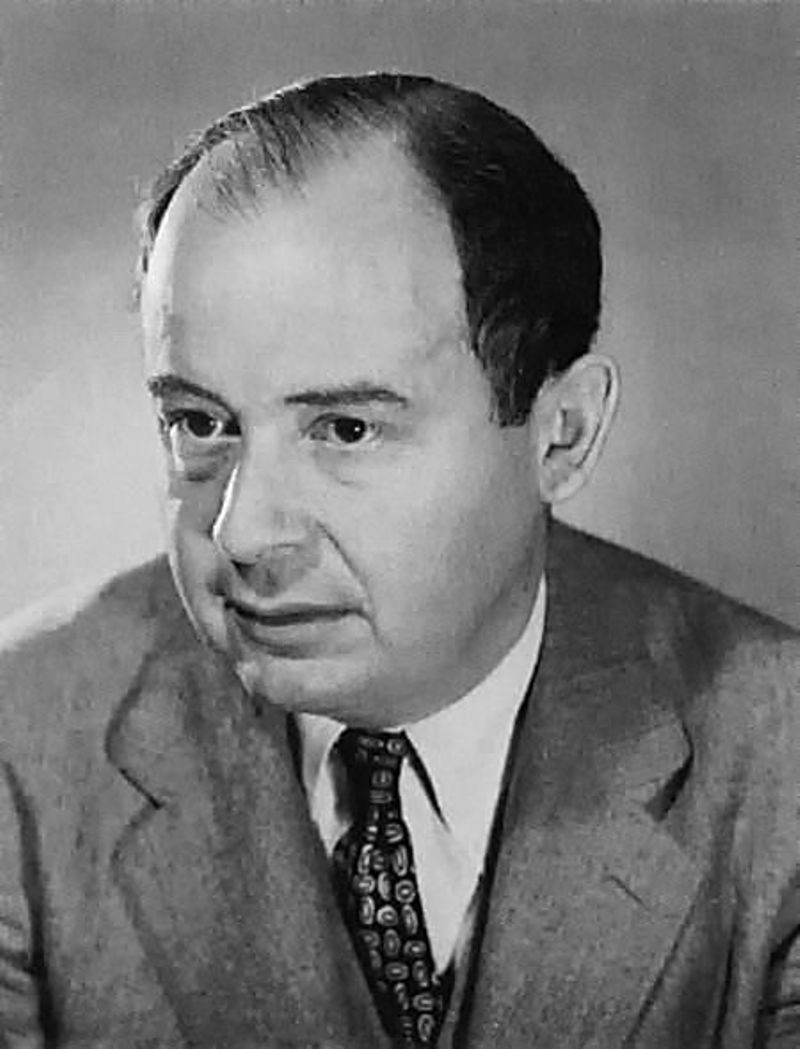
John von Neumann
John von Neumann writes First Draft of a Report on the EDVAC
In a widely circulated paper, mathematician John von Neumann outlines the architecture of a stored-program computer, including electronic storage of programming information and data — which eliminates the need for more clumsy methods of programming such as plugboards, punched cards and paper. Hungarian-born von Neumann demonstrated prodigious expertise in hydrodynamics, ballistics, meteorology, game theory, statistics, and the use of mechanical devices for computation. After the war, he concentrated on the development of Princeton´s Institute for Advanced Studies computer.
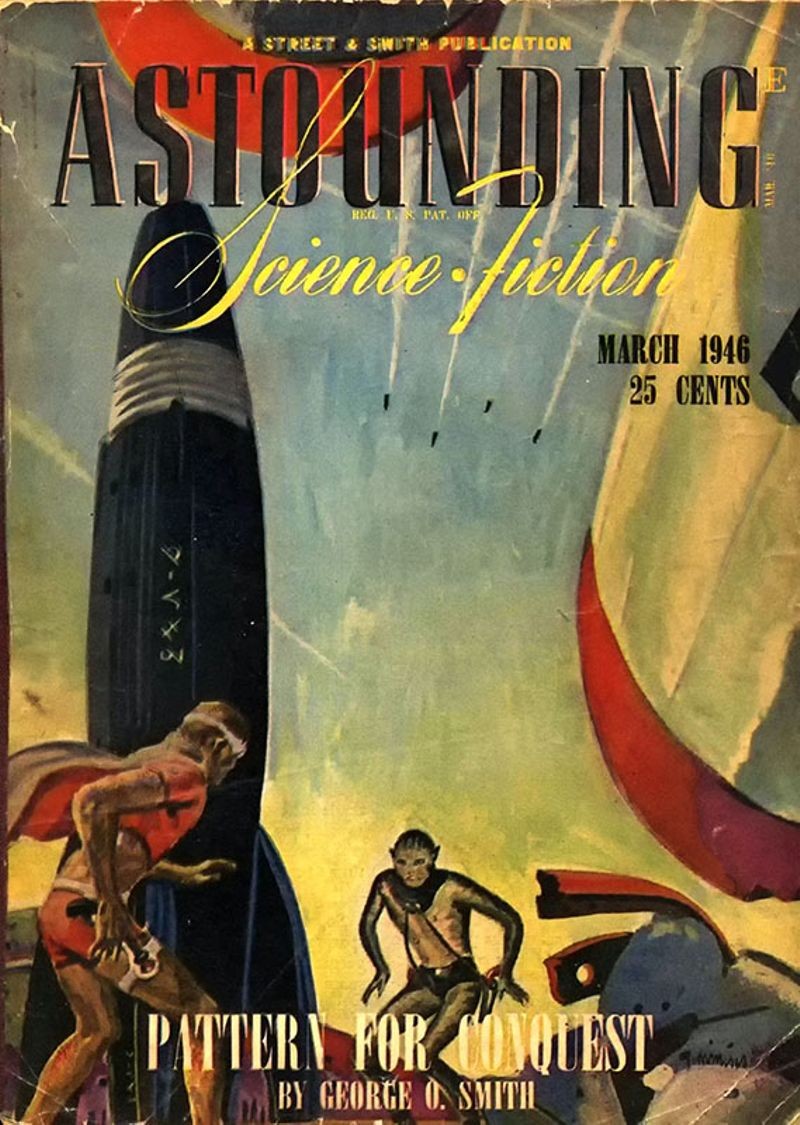
Cover from March 1949 Astounding Science Fiction
A Logic Named Joe is published
Under a series of pseudonyms, Will F. Jenkins’ science fiction had been regularly appearing since the 1920s. In the March 1946 issue of Astounding Science Fiction, Jenkins publishes A Logic Named Joe, a short story detailing a world where computers, called Logics, were interconnected into a massive, worldwide network. One such Logic begins to malfunction, giving out secret information about disallowed topics. Almost fifty years prior to the invention of the Internet, A Logic Named Joe contains one of the most prescient views of the capabilities of computers in a network.
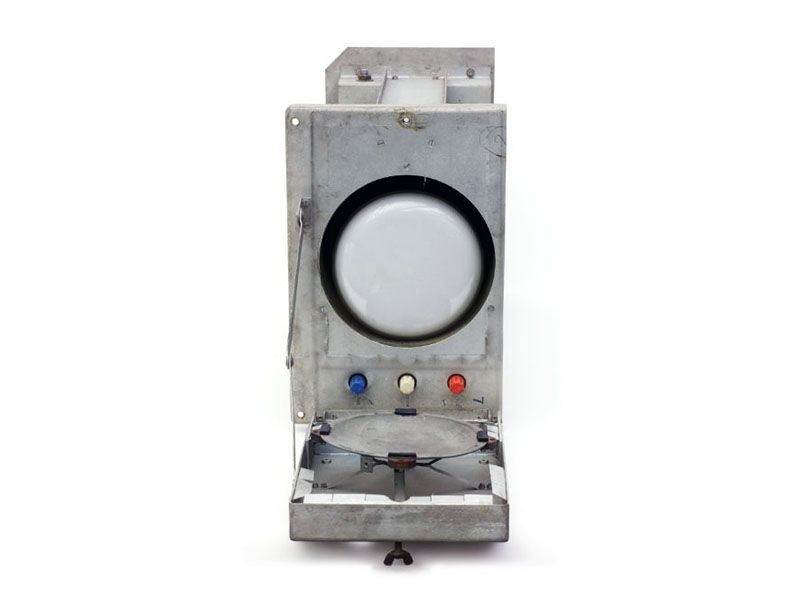
Manchester Mark I Williams-Kilburn tube
Manchester Mark I Williams-Kilburn tube
At Manchester University, Freddie Williams and Tom Kilburn develop the Williams-Kilburn tube. The tube, tested in 1947, was the first high-speed, entirely electronic memory. It used a cathode ray tube (similar to an analog TV picture tube) to store bits as dots on the screen’s surface. Each dot lasted a fraction of a second before fading so the information was constantly refreshed. Information was read by a metal pickup plate that would detect a change in electrical charge.
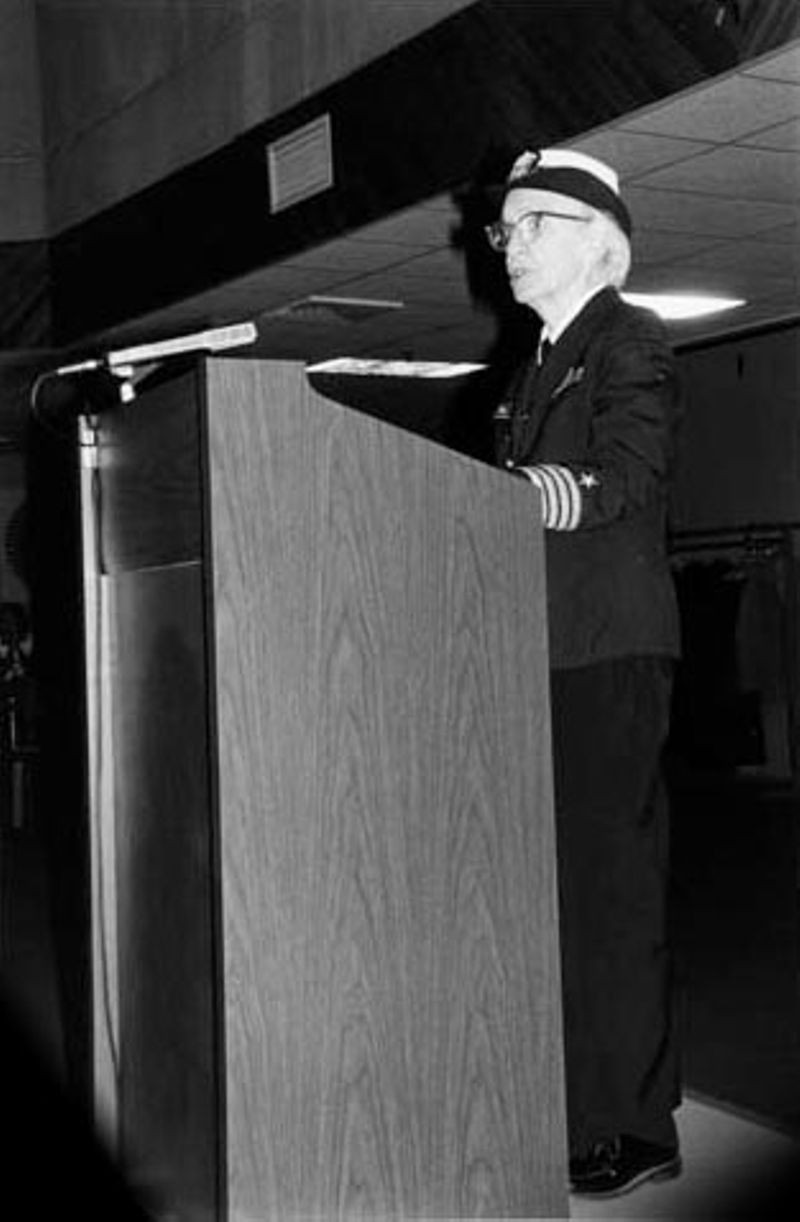
Grace Hopper speaking at The Computer Museum in Boston
“First actual case of bug being found”
The word ‘bug,’ when applied to computers, means some form of error or failure. On September 9th, Grace Hopper records what she jokingly called the first actual computer bug – in this case, a moth stuck between relay contacts of the Harvard Mark II computer prior to its eventual installation at the Naval Weapons Laboratory at Dalhgren. VA. Hopper helped program the Mark II, and the earlier Harvard Mark I computer, while working for professor Howard Aiken. She worked tirelessly on developing these computers to the fullest through inventive programming. After Harvard, she worked for computer manufacturer Remington-Rand where she developed what is often considered the first compiler, A-0. She also served on the committee to develop COBOL, a standard and widely adopted programming language that transformed the way software was developed for business applications. COBOL is still in use today. Hopper was made a Fellow of the Computer History Museum in 1987.
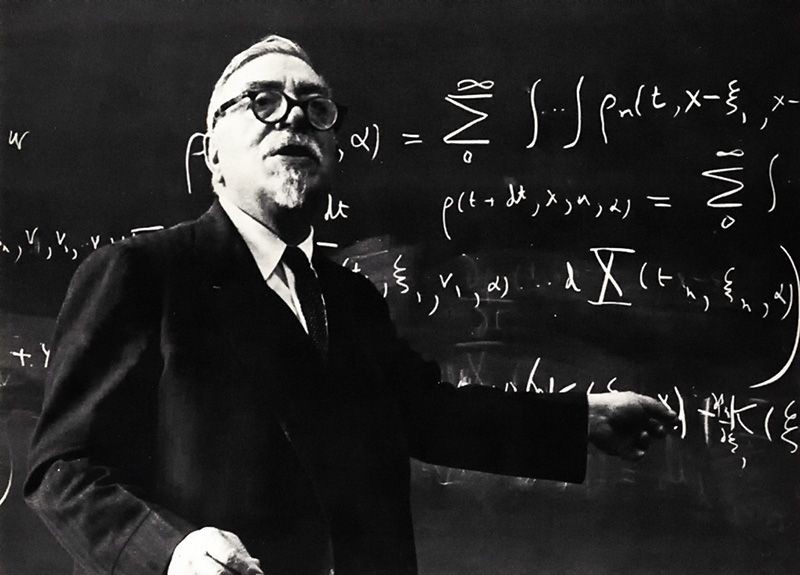
Norbert Wiener
Cybernetics
Norbert Wiener publishes the book Cybernetics, which has a major influence on research into artificial intelligence and control systems. Wiener drew on his World War II experiments with anti-aircraft systems that anticipated the course of enemy planes by interpreting radar images. Wiener coined the term “cybernetics” from the Greek word for “steersman.”

Claude Shannon
The Mathematical Theory of Communication
American mathematician Claude Shannon writes The Mathematical Theory of Communication, laying the groundwork for understanding the theoretical limits of communication between people and machines. As part of this work Shannon identified the bit as a fundamental unit of information and, coincidentally, the basic unit of computation.

Kilburn (left) and Williams in front of ‘Baby’
First Computer Program to Run on a Computer
University of Manchester researchers Frederic Williams, Tom Kilburn, and Geoff Toothill develop the Small-Scale Experimental Machine (SSEM), better known as the Manchester “Baby.” The Baby was built to test a new memory technology developed by Williams and Kilburn — soon known as the Williams Tube – which was the first high-speed electronic random access memory for computers. Their first program, consisting of seventeen instructions and written by Kilburn, ran on June 21st, 1948. This was the first program in history to run on a digital, electronic, stored-program computer.

IBM Selective Sequence Electronic Calculator (SSEC)
SSEC goes on display
The Selective Sequence Electronic Calculator (SSEC) project, led by IBM engineer Wallace Eckert, uses both relays and vacuum tubes to process scientific data at the rate of 50 14 x 14 digit multiplications per second. Before its decommissioning in 1952, the SSEC produced the moon position tables used in early planning of the 1969 Apollo XII moon landing. These tables were later confirmed by using more modern computers for the actual flights. The SSEC was one of the last of the generation of ‘super calculators’ to be built using electromechanical technology.
Alan Turing quoted by The London Times on artificial intelligence
On June 11, The London Times quotes the mathematician Alan Turing. “I do not see why it (the machine) should not enter any one of the fields normally covered by the human intellect, and eventually compete on equal terms. I do not think you even draw the line about sonnets, though the comparison is perhaps a little bit unfair because a sonnet written by a machine will be better appreciated by another machine.”
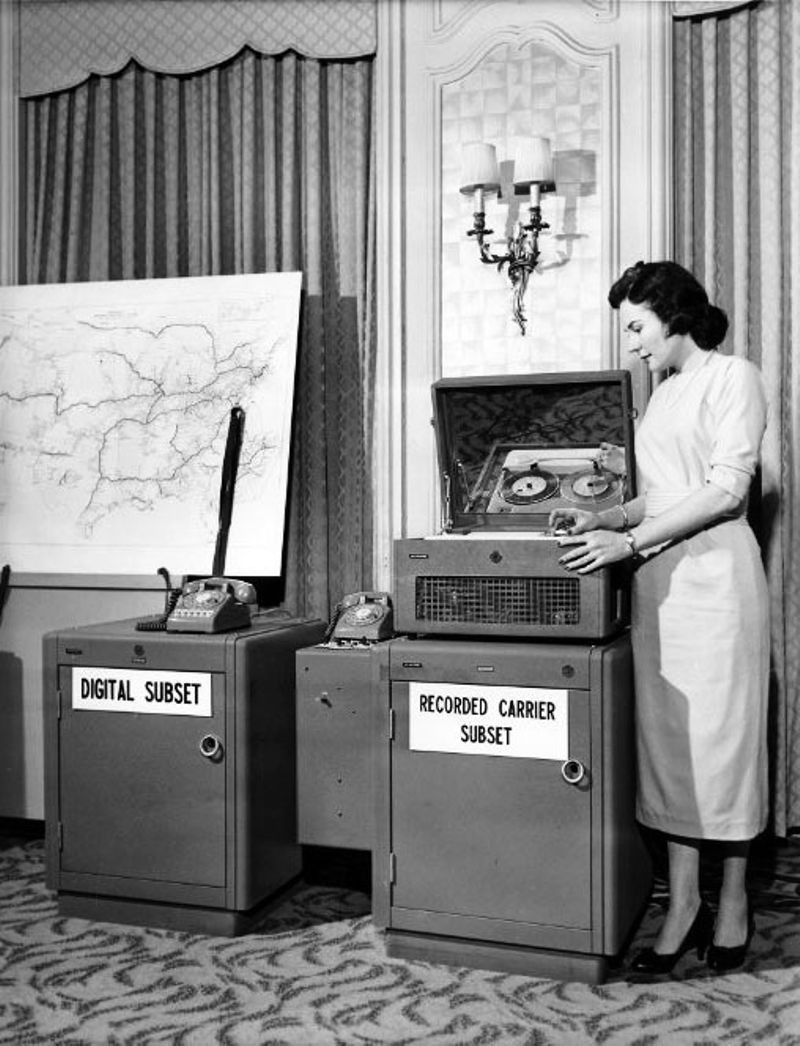
AT&T modem circa 1958
Birth of the Modem
Computers “talk” over ordinary voice phone lines through modems. Developed in 1949 for transmitting radar signals by Jack Harrington’s group at the Air Force Cambridge Research Center (AFCRC) near Boston, the modem modulates digital data into sounds, and demodulates received sounds into digital data. (MODulation + DEModulation = MODEM). Modems will be adapted to computers in 1953 for the upcoming SAGE system, and commercialized by Bell Telephone in 1958. By letting computers use normal voice telephone lines, they offer greater coverage and lower costs than dedicated telegraph or leased data lines.
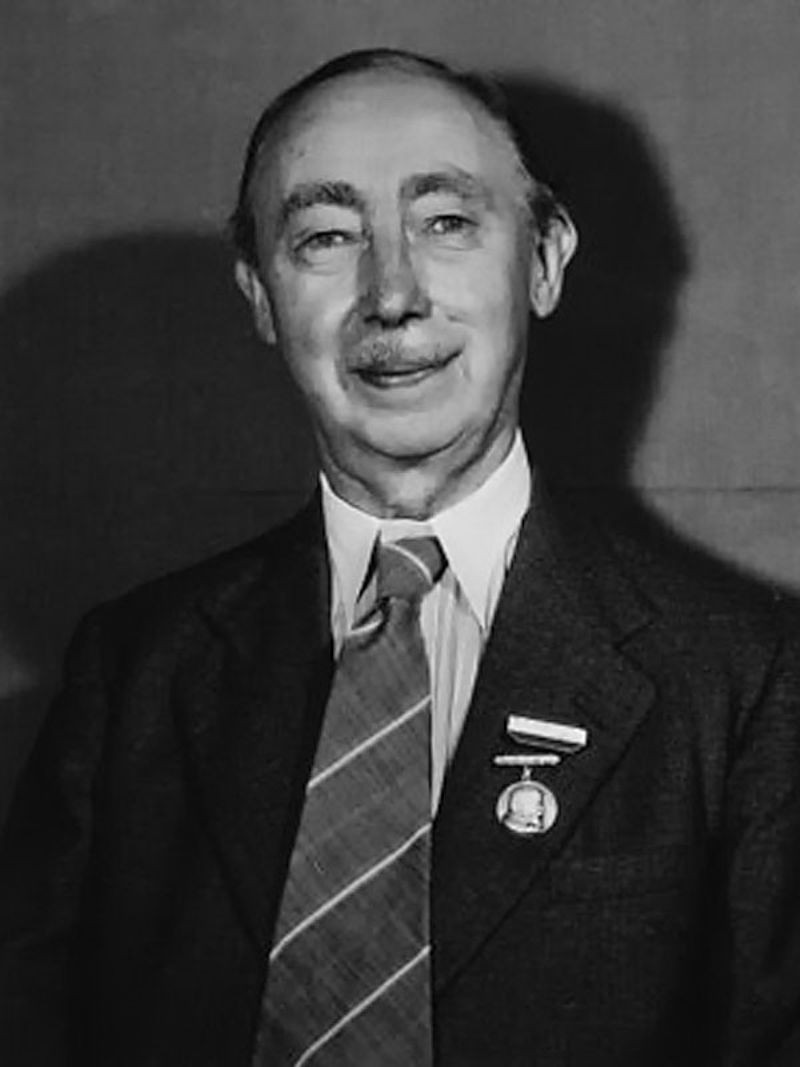
British brain surgeon Geoffrey Jefferson
Brain surgeon reflects on artificial intelligence
On June 9, at Manchester University’s Lister Oration, British brain surgeon Geoffrey Jefferson states, “Not until a machine can write a sonnet or compose a concerto because of thoughts and emotions felt, and not by the chance fall of symbols, could we agree that machine equals brain – that is, not only write it but know that it had written it. No mechanism could feel (and not merely artificially signal, an easy contrivance) pleasure at its successes, grief when its valves fuse, be warmed by flattery, be made miserable by its mistakes, be charmed by sex, be angry or miserable when it cannot get what it wants.”

CSIRAC
CSIRAC runs first program
While many early digital computers were based on similar designs, such as the IAS and its copies, others are unique designs, like the CSIRAC. Built in Sydney, Australia by the Council of Scientific and Industrial Research for use in its Radio physics Laboratory in Sydney, CSIRAC was designed by British-born Trevor Pearcey, and used unusual 12-hole paper tape. It was transferred to the Department of Physics at the University of Melbourne in 1955 and remained in service until 1964.
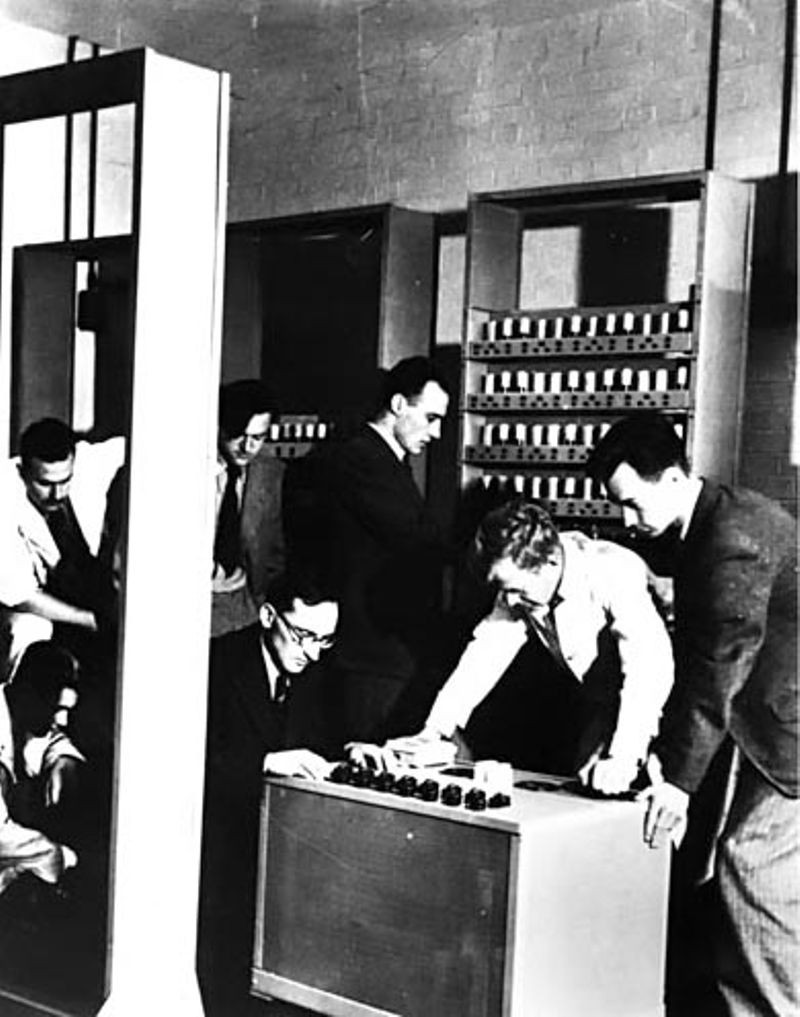
EDSAC
EDSAC completed
The first practical stored-program computer to provide a regular computing service, EDSAC is built at Cambridge University using vacuum tubes and mercury delay lines for memory. The EDSAC project was led by Cambridge professor and director of the Cambridge Computation Laboratory, Maurice Wilkes. Wilkes’ ideas grew out of the Moore School lectures he had attended three years earlier. One major advance in programming was Wilkes’ use of a library of short programs, called “subroutines,” stored on punched paper tapes and used for performing common repetitive calculations within a larger program.
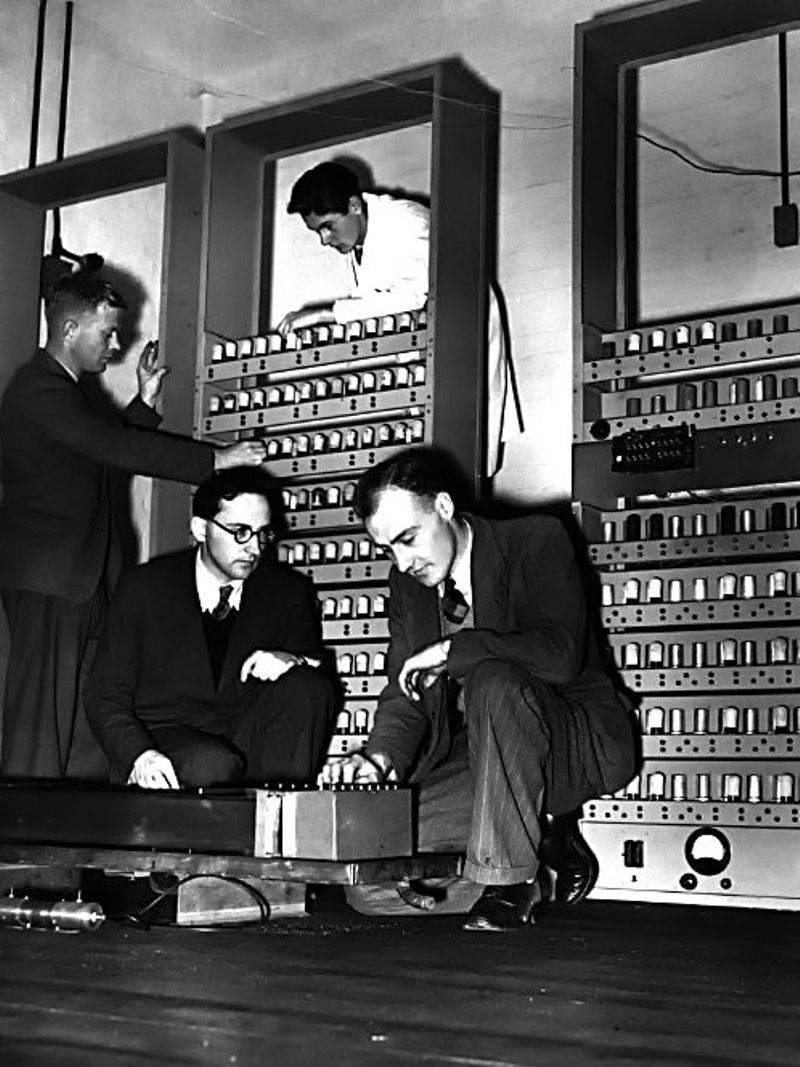
Maurice Wilkes with EDSAC
EDSAC
Maurice Wilkes and his team at the University of Cambridge construct the Electronic Delay Storage Automatic Calculator (EDSAC). EDSAC, a stored program computer, used mercury delay line memory. Wilkes had attended the University of Pennsylvania’s Moore School of Engineering summer sessions about the ENIAC in 1946 and shortly thereafter began work on the EDSAC.
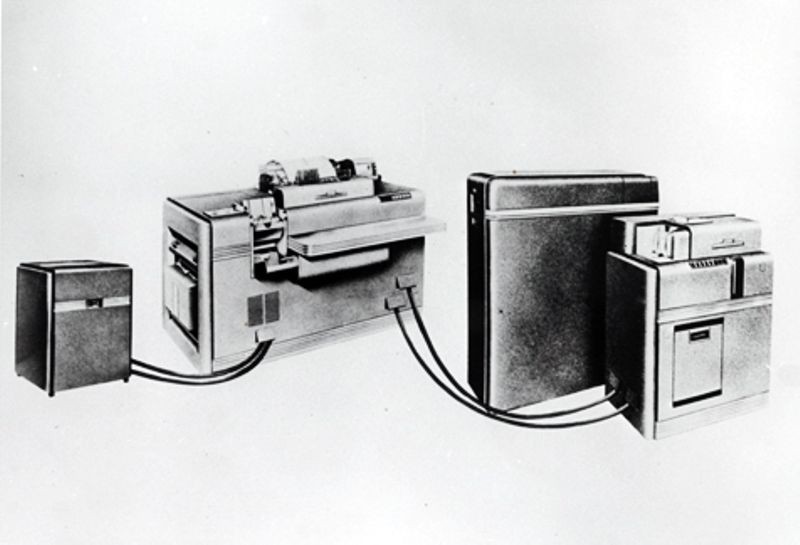
IBM Card Programmed Calculator (CPC), ca. 1949
IBM switches to electronics
IBM executive Thomas Watson Jr., speaking to an IBM sales meeting, predicts that all moving parts in IBM machines would be replaced by electronics within a decade. The change to electronics marked a major shift for IBM, which since the 1920s was the world leader in electro-mechanical punched card systems. Initially, “electronics” meant the use of vacuum tubes for circuitry but in the mid-1950s, IBM management instructed all its engineers to make new equipment: “Solid state by ’58,” was the call–which meant using the new technology of transistors in all new IBM computer products.
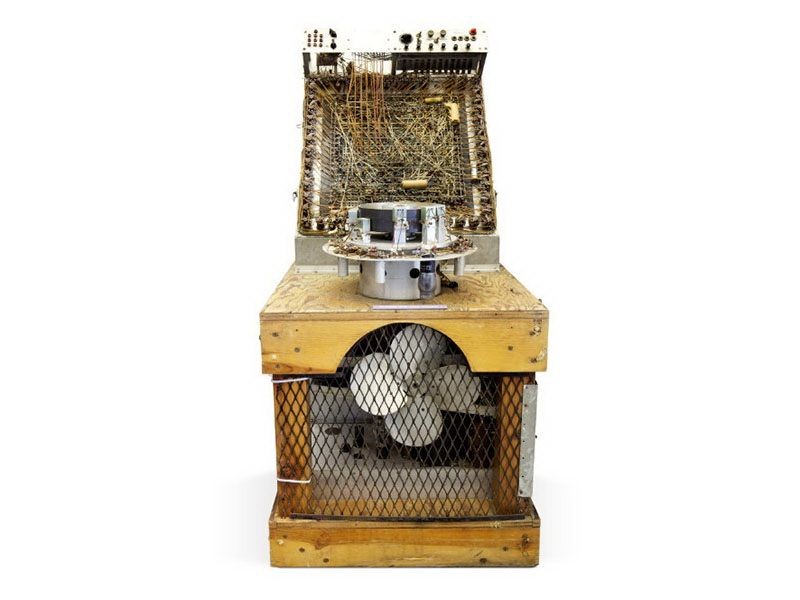
MADDIDA (Magnetic Drum Digital Differential Analyzer) prototype
MADDIDA developed
MADDIDA is a digital drum-based differential analyzer. This type of computer is useful in performing many of the mathematical equations scientists and engineers encounter in their work. It was originally created for a nuclear missile design project in 1949 by a team led by Fred Steele. It used 53 vacuum tubes and hundreds of germanium diodes, with a magnetic drum for memory. Tracks on the drum did the mathematical integration. MADDIDA was flown across the country for a demonstration to John von Neumann, who was impressed. Northrop was initially reluctant to make MADDIDA a commercial product, but by the end of 1952, six had sold.
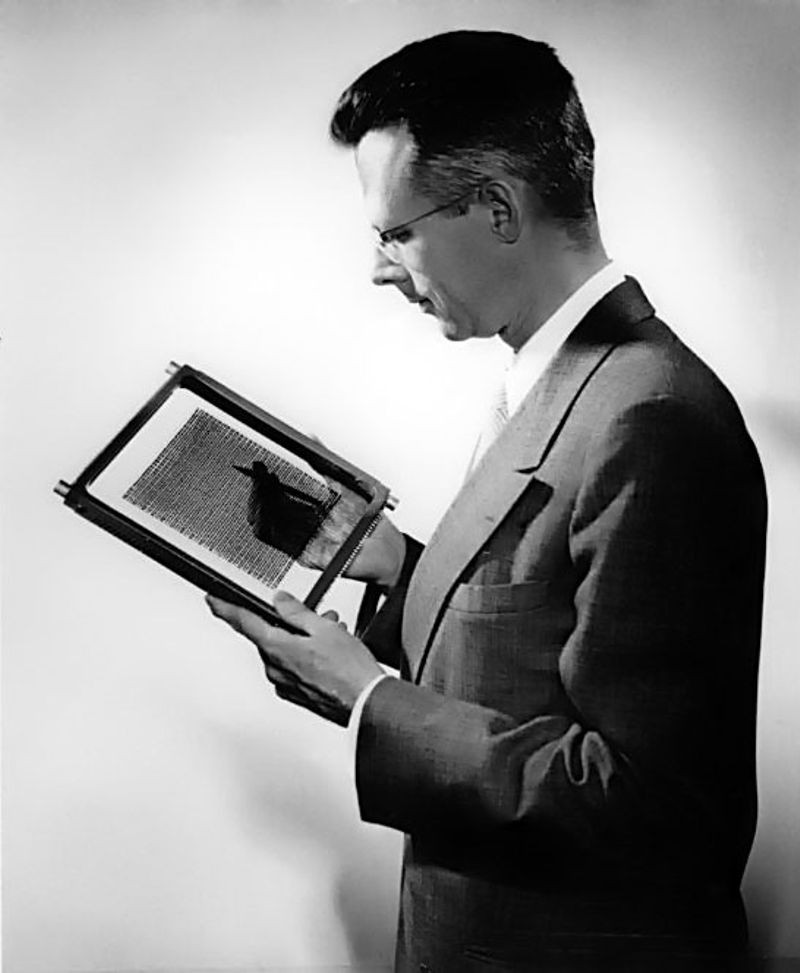
Jay Forrester holding early core memory plane
MIT – Magnetic core memory
While working on the Whirlwind project at MIT, Jay Forrester writes a notebook entry on June 13 that describes his early thoughts on the “coincident current” technique for a magnetic core memory system. This system was the first reliable high-speed random access memory for computers. Magnetic core memory was widely used as the main memory technology for computers well into the 1970s.
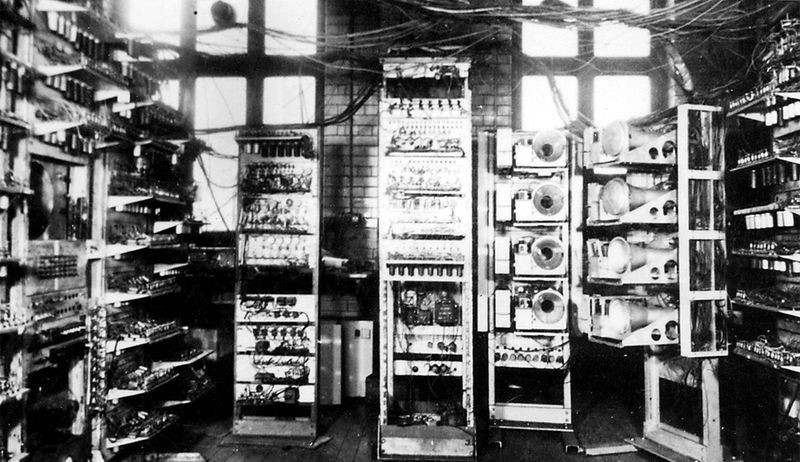
Manchester Mark I
Manchester Mark I completed
Built by a team led by engineers Frederick Williams and Tom Kilburn, the Mark I serves as the prototype for Ferranti’s first computer – the Ferranti Mark 1. The Manchester Mark I used more than 1,300 vacuum tubes and occupied an area the size of a medium room. Its “Williams-Kilburn tube” memory system was later adopted by several other early computer systems around the world.

